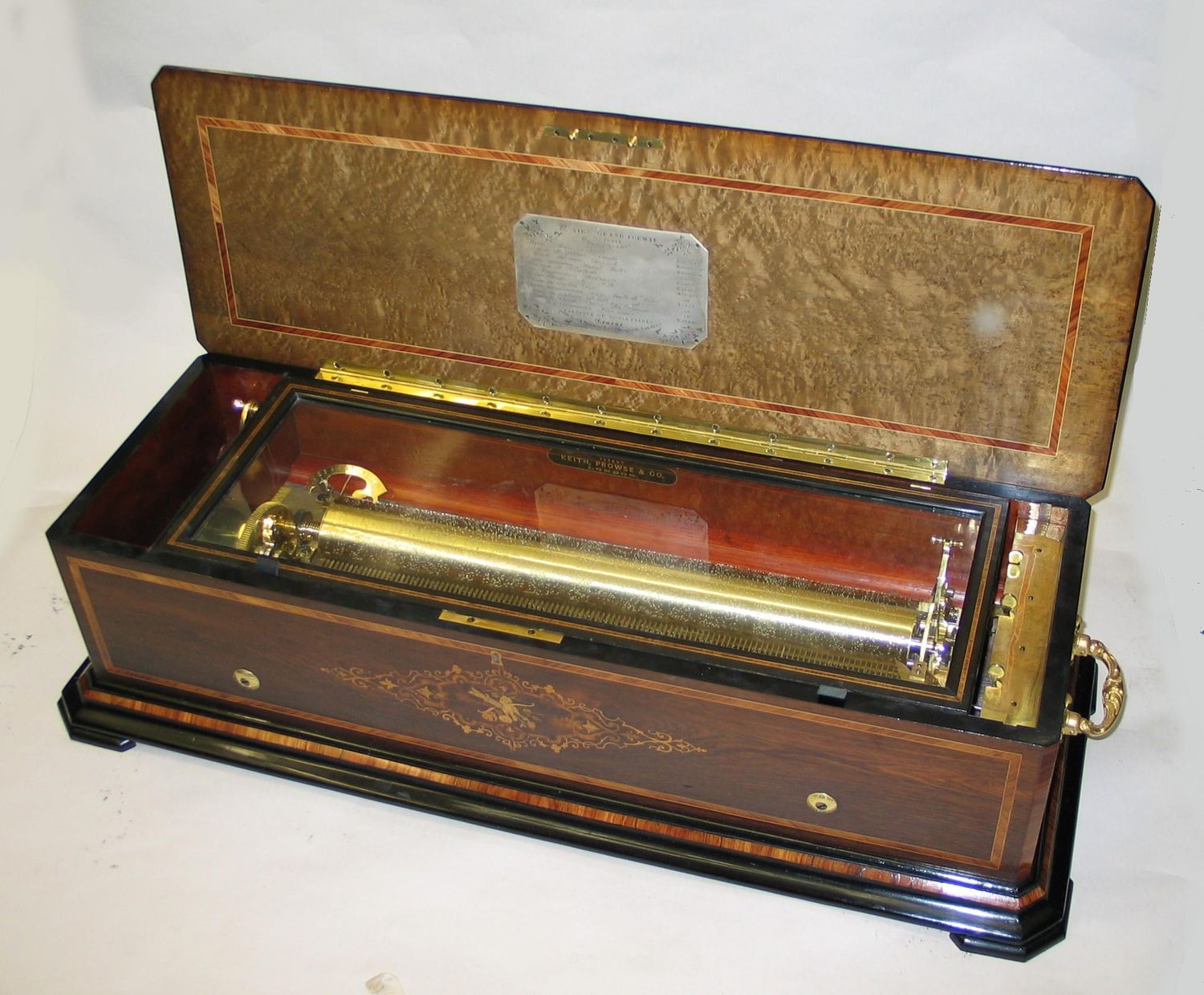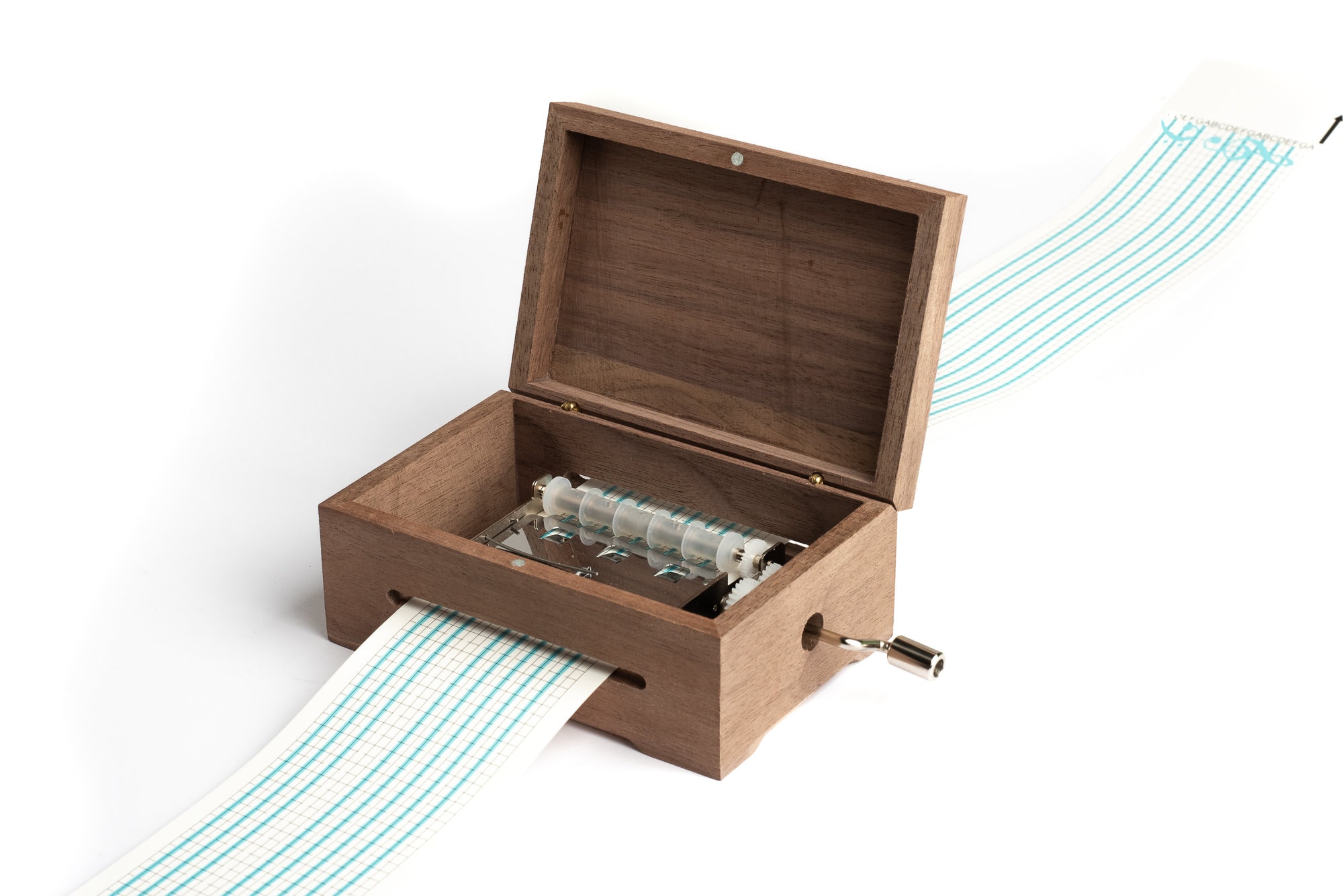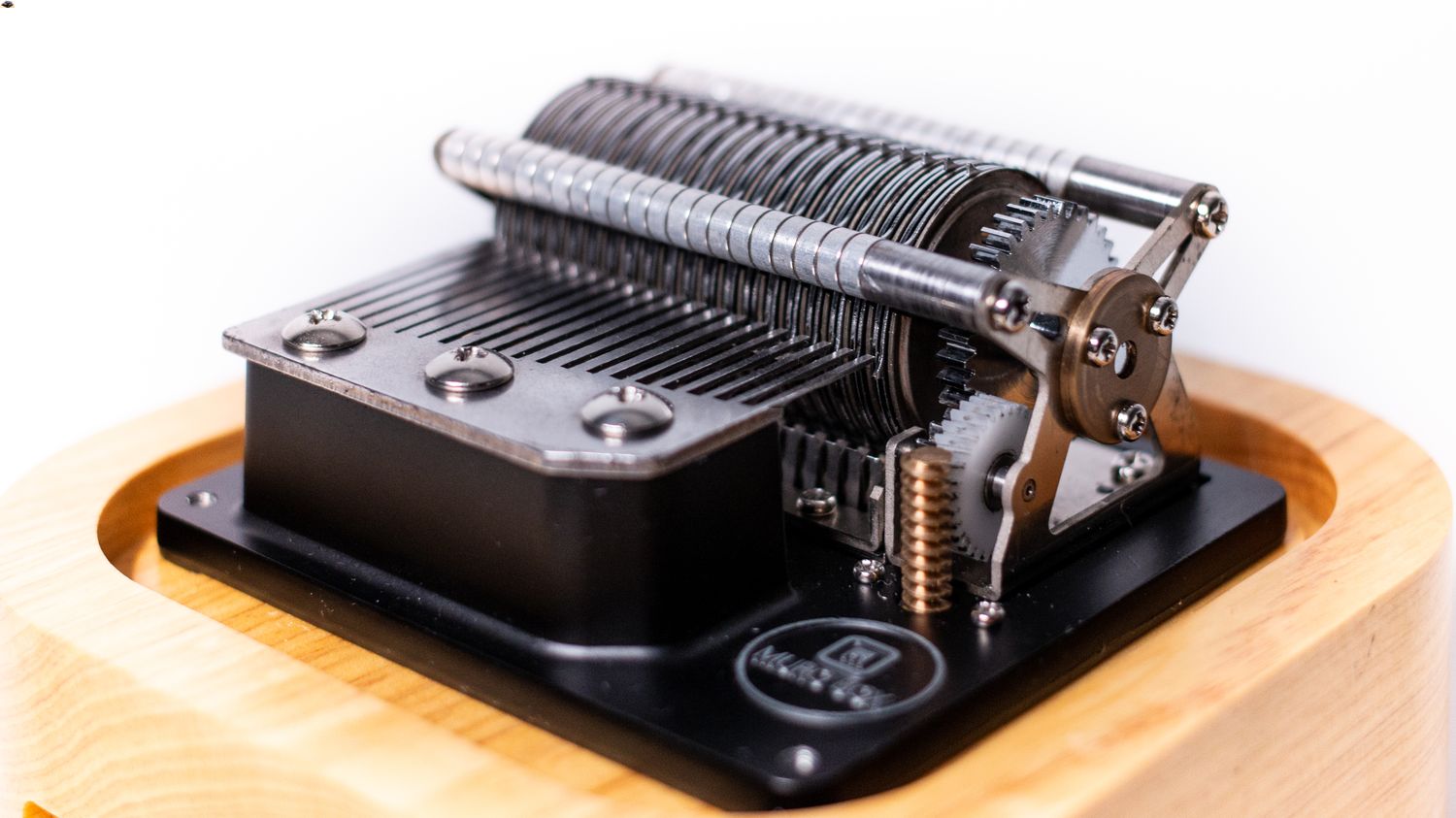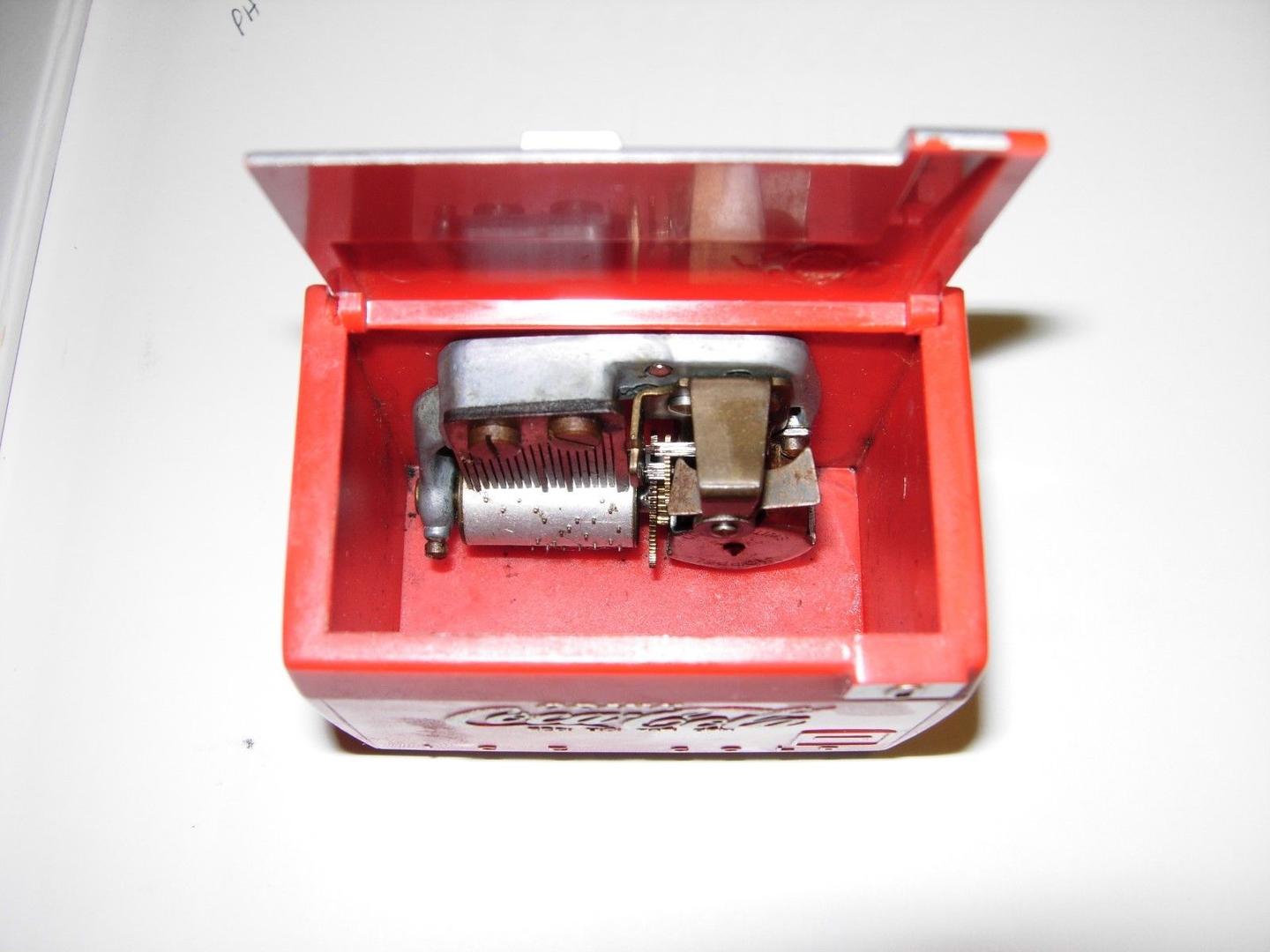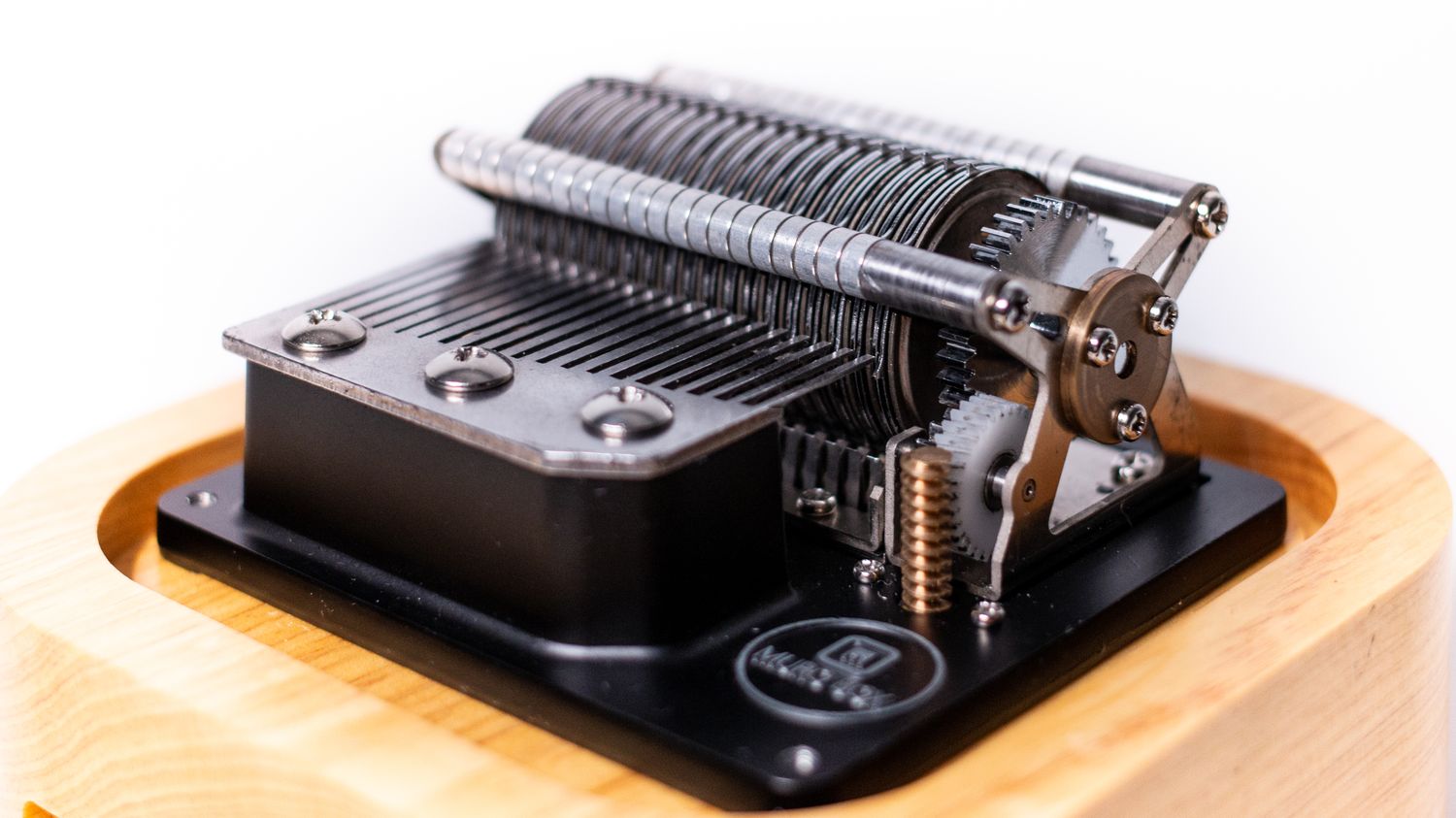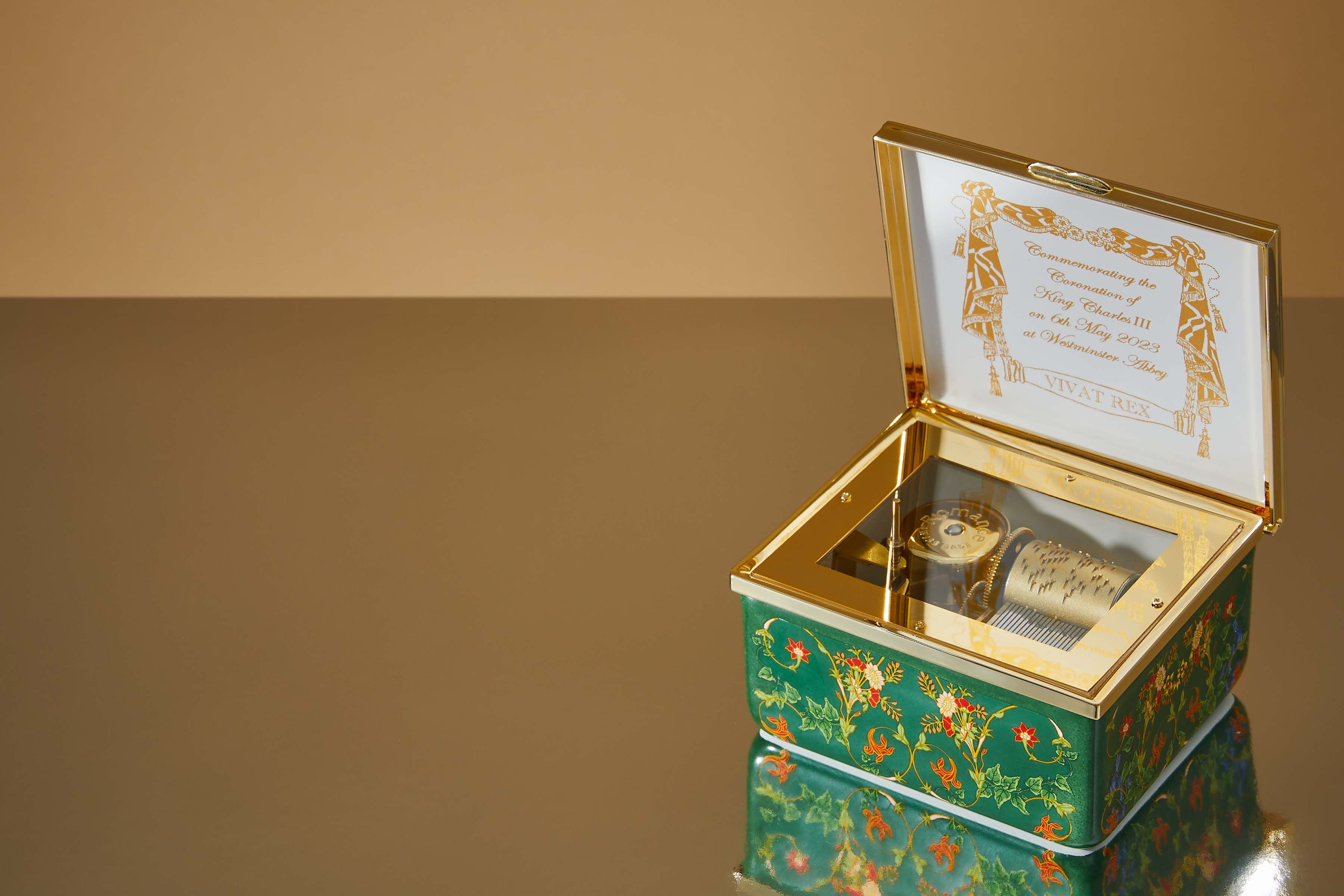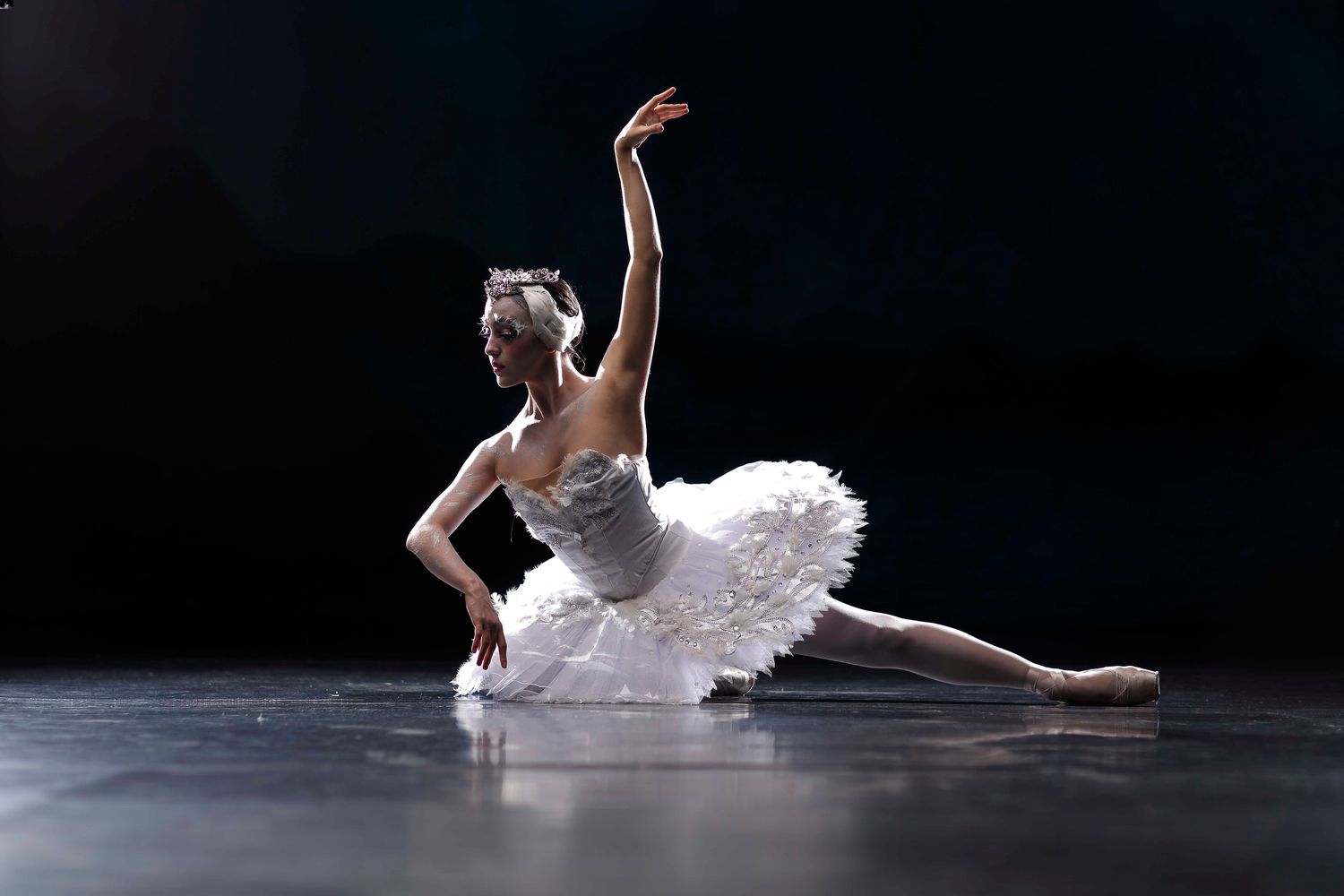Home>Devices & Equipment>Music Box>How To Play Music Box Dancer
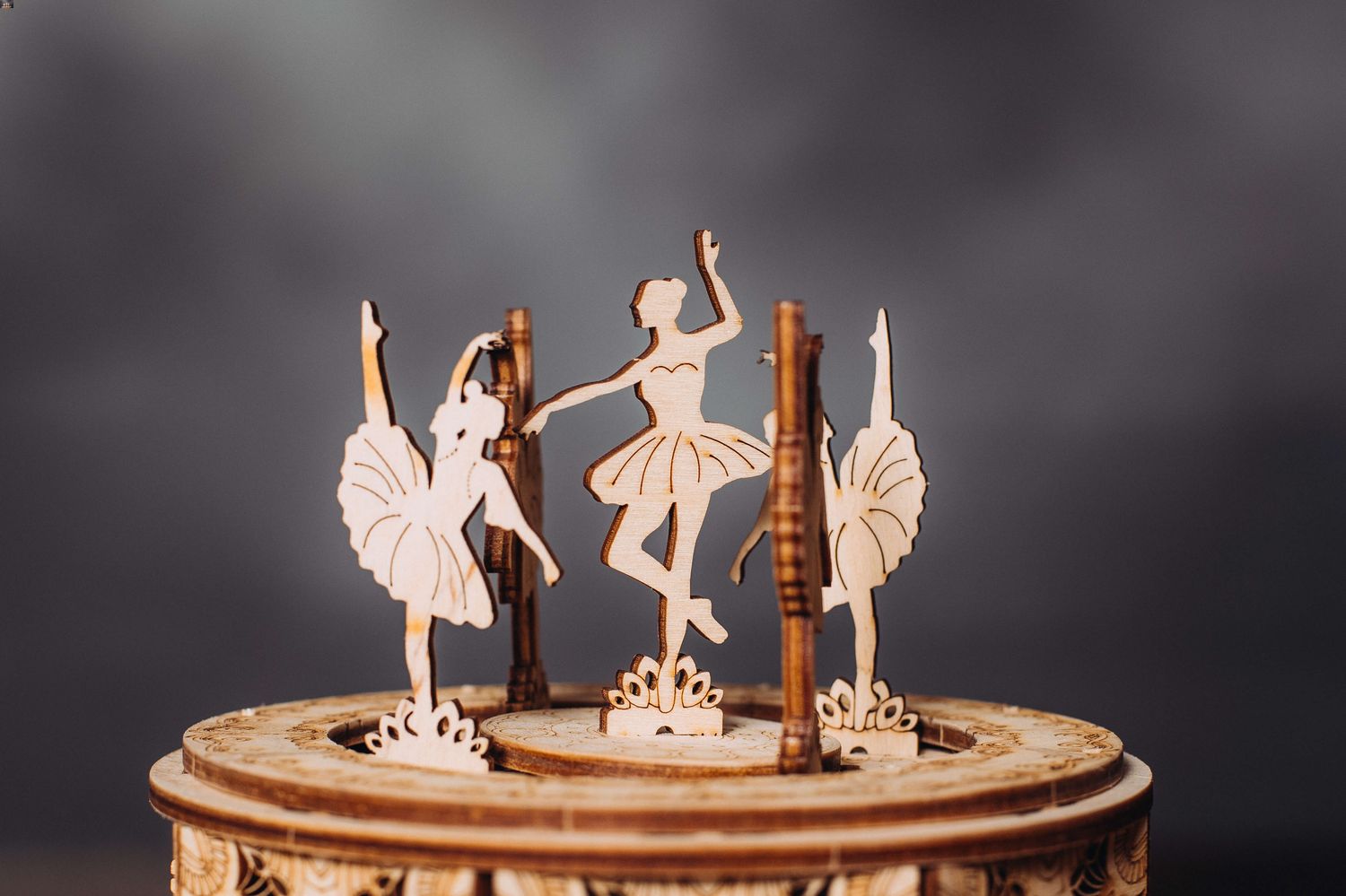

Music Box
How To Play Music Box Dancer
Modified: February 9, 2024
Learn how to play the mesmerizing tune of Music Box Dancer on a music box and add charm to your melodies. Discover step-by-step instructions and tips for mastering this enchanting piece.
(Many of the links in this article redirect to a specific reviewed product. Your purchase of these products through affiliate links helps to generate commission for AudioLover.com, at no extra cost. Learn more)
Table of Contents
Introduction
Welcome to our comprehensive guide on how to play Music Box Dancer! If you’ve ever been enchanted by the delicate and enchanting sound of a music box, then you’re in for a treat. Music Box Dancer, composed by Frank Mills, is a beautiful and timeless instrumental piece that captures the whimsy and magic of a music box. Whether you’re a beginner or an experienced musician, learning how to play this iconic tune on the piano or any other instrument can be a rewarding and enjoyable experience.
In this guide, we will take you through a step-by-step process to help you master Music Box Dancer. We’ll break down the melody, explore the chords, and delve into the intricacies of the timing and rhythm. We’ll also provide tips on adding your own artistic expression to make the piece truly your own.
Whether you’re learning Music Box Dancer for personal enjoyment, to impress your friends, or to expand your musical repertoire, this guide is here to help. Even if you’re a complete beginner, don’t fret! With practice and dedication, you’ll be dazzling audiences with your rendition of Music Box Dancer in no time.
So, tighten your bowtie, dust off your instrument, and let’s dive into the magical world of Music Box Dancer!
Step 1: Understanding the Basics of Music Box Dancer
Before delving into the intricacies of playing Music Box Dancer, it’s important to familiarize yourself with the basics. Understanding the structure and key elements of the piece will provide you with a solid foundation for learning and mastering the melody.
Music Box Dancer is written in the key of C major, which means it predominantly uses the white keys on a piano. The piece is composed in 4/4 time signature, meaning there are four beats in each measure and the quarter note receives one beat. This simple time signature lends itself well to the playful and light-hearted nature of the tune.
The melody of Music Box Dancer primarily consists of short, repetitive phrases that are played in the right hand. These phrases are characterized by their catchy and melodic nature, evoking the sound of a music box in all its whimsical glory. As you become more comfortable with the piece, you can also experiment with adding embellishments and variations to make it uniquely yours.
Additionally, it’s important to listen to recordings of the piece to familiarize yourself with the tempo, dynamics, and overall mood of Music Box Dancer. Pay attention to the subtle nuances in the performance, such as the delicate touch and precise articulation. This will help you capture the essence of the piece and infuse it into your own interpretation.
Lastly, don’t forget to practice proper hand and finger placement. Achieving a relaxed and natural hand position will not only reduce tension and fatigue but also allow for greater control and precision while playing. Take the time to warm up your hands and fingers with some simple exercises before diving into the piece.
By understanding the basics of Music Box Dancer, you’ll set yourself up for success as you progress through the subsequent steps. Now that you have a solid foundation, let’s move on to the next step: familiarizing yourself with the melody.
Step 2: Familiarizing Yourself with the Melody
Now that you have a good understanding of the basics of Music Box Dancer, it’s time to dive into the melody. This step is crucial for getting comfortable with the notes and rhythm of the piece.
The main melody of Music Box Dancer is relatively simple, making it accessible for beginners and intermediate players alike. The melody is primarily played in the right hand while the left hand supports with chord accompaniment.
Start by identifying the opening notes of the melody. Listen to the recording or refer to sheet music if available. Take it one phrase at a time and play the melody slowly with the correct fingering. Pay close attention to the rhythm and dynamics of each note, aiming to replicate the delicate and flowing nature of the music box sound.
As you become familiar with the first few phrases, gradually increase the tempo and aim for a smooth and seamless performance. Practice playing the melody both ascending and descending, ensuring that each note is distinct and well-articulated.
Once you feel comfortable with the melody in isolation, try to play it along with the recorded version or use a metronome to maintain a steady tempo. This will help you develop a sense of timing and play in synchronization with the music.
Remember, learning a melody takes time and patience. Don’t be discouraged if you stumble or if it takes several attempts to get a particular phrase just right. Take breaks when needed, and always practice with a relaxed mindset. The goal is to internalize the melody and make it feel natural and effortless.
As you progress, experiment with different dynamics and phrasing to add your own artistic touch to the melody. Music is not just about playing the correct notes; it’s about expressing emotion and conveying a story. Let your interpretation shine through and make Music Box Dancer truly your own.
Once you are comfortable with the melody, it’s time to move on to the next step: breaking down the chords that accompany the melody.
Step 3: Breaking Down the Chords
While the melody of Music Box Dancer is undoubtedly attention-grabbing, the chords provide a harmonious backdrop that adds depth and richness to the piece. Understanding the chords and their progression is essential for capturing the full essence of the composition.
The chord progression in Music Box Dancer follows a simple yet captivating pattern. It revolves around the key of C major and primarily consists of common triads, such as C, F, G, and A minor.
Begin by identifying the chords that accompany each phrase of the melody. Take note of their root position and the inversions used in the composition. Practice playing the chords smoothly and transitioning between them with ease.
As you progress, pay attention to the timing and rhythm of the chords. Aim to align them with the melody, creating a cohesive and harmonious whole. It’s important to maintain a balance, ensuring that the chords do not overpower the delicate melody.
Once you have a good grasp of the individual chords, try playing through the entire piece, focusing on the chord changes and their relationship to the melody. Take note of any challenging transitions or unusual chord voicings and practice them separately until you feel comfortable.
Listening to recordings of Music Box Dancer will also provide insight into how different musicians interpret the chord progressions. Some may choose to add variations or embellishments to make the chords more interesting. Feel free to experiment and add your personal touch as well, as long as it enhances the overall sound and maintains the essence of the piece.
Remember to practice playing the chords both hands separately and then gradually bring them together. This will help you develop coordination and fluidity in your playing.
Breaking down the chords is an important step in mastering Music Box Dancer. With practice and dedication, you’ll be able to navigate the chord progressions seamlessly, elevating your performance and capturing the true essence of this enchanting piece.
Now that you have a solid understanding of the chords, let’s explore the timing and rhythm in the next step.
Step 4: Mastering the Timing and Rhythm
Timing and rhythm are crucial elements in bringing Music Box Dancer to life. The delicate and playful nature of the piece relies on a precise and balanced execution of timing and rhythm.
Begin by practicing the piece at a slow tempo, focusing on maintaining a steady rhythm. Use a metronome to keep yourself in time, gradually increasing the speed as you become more comfortable. Pay close attention to the placement of each note within the beat and strive for a consistent and even flow.
While the melody itself has a straightforward rhythm, pay special attention to the syncopated sections. These sections create a sense of anticipation and add a unique flair to the piece. Break down these sections and practice them slowly, ensuring that you maintain the correct timing and accentuate the syncopation.
As you play through Music Box Dancer, be mindful of the phrasing. Take note of where the natural pauses and breaks occur. This will help provide a sense of musicality and enhance the overall expression of the piece.
Listening to recordings of the piece, particularly those by accomplished musicians, can be immensely helpful in internalizing the correct timing and rhythm. By observing their interpretation, you can gain insights into how to navigate the various rhythmic nuances of Music Box Dancer.
Keep in mind that timing and rhythm are not just about hitting the right notes at the right time. It’s about injecting emotion and expression into your playing. Experiment with different dynamics, accents, and subtle variations to make the piece come alive.
Recording yourself playing Music Box Dancer can also be a useful practice. Listen back to the recording to identify any sections where your timing or rhythm may need improvement. Use this feedback to refine your performance and make adjustments as needed.
With consistent practice and attention to detail, you will gradually master the timing and rhythm of Music Box Dancer. This step is crucial for achieving a polished and captivating performance.
Now that you have a firm grasp on the timing and rhythm, it’s time to explore adding your artistic expression to the piece. Let’s move on to the next step!
Step 5: Adding Artistic Expression
Music Box Dancer is not just a simple tune; it is a canvas for artistic expression. In this step, we will explore ways to add your personal touch and bring out the beauty and emotion of the piece.
Start by experimenting with dynamics. Music Box Dancer thrives on contrast, with sections that are soft and delicate followed by moments of crescendo and intensity. Explore the range of dynamics, from pianissimo to fortissimo, to create a sense of ebb and flow within the piece. Use your interpretation to highlight the nuances and bring out the emotions embedded in the melody and chords.
In addition to dynamics, consider the use of rubato. Rubato allows for slight variations in timing and tempo, giving the music a fluid and expressive feel. It is particularly effective in Music Box Dancer as it can emulate the whimsical and free-flowing nature of a music box. Experiment with stretching or shortening certain notes or phrases to add your unique touch.
Don’t be afraid to explore different articulations as well. Varying the length and attack of the notes can add personality and character to the piece. Play around with staccato, legato, and accents to highlight specific moments or create a more playful and lively rendition of Music Box Dancer.
If you’re an advanced player, you can take artistic liberties by incorporating embellishments and ornamentations into the melody. These can include trills, grace notes, and glissandos, among others. However, be mindful of maintaining the integrity of the piece and not overpowering the simplicity and beauty of the original composition.
Remember, the goal is not to simply mimic the notes on the sheet music but to infuse the piece with your own unique interpretation and emotion. Be intentional with every note you play, allowing your passion and musicality to shine through.
As you experiment with adding artistic expression, record yourself playing the piece. Take the time to listen back to your performance and make adjustments as necessary. This will allow you to refine and shape your interpretation to create a truly captivating rendition of Music Box Dancer.
Now that you’ve added your artistic expression to the piece, it’s time for the final step: practicing and fine-tuning to perfect your performance.
Step 6: Practicing and Fine-tuning
Now that you have gone through the previous steps and added your artistic expression to Music Box Dancer, it’s time to focus on refining your skills and perfecting your performance through dedicated practice and fine-tuning.
Start by breaking down the piece into smaller sections, focusing on any challenging phrases or transitions. Practice these sections slowly and repetitively, gradually increasing the tempo as you gain confidence. It’s important to maintain precision and accuracy in your playing, ensuring that each note is clear and well-executed.
When practicing, pay attention to any technical aspects that need improvement. This could include hand coordination, finger strength, or even posture. Working on these technical aspects will not only enhance your performance of Music Box Dancer but also benefit your overall playing technique.
As you practice, strive for consistency. Make note of any areas where you tend to make mistakes or lose focus, and dedicate extra time to these sections. Breaking down the piece even further into smaller phrases or individual measures can help you tackle specific challenges more effectively.
During your practice sessions, take breaks and listen to recordings of professional musicians playing Music Box Dancer. Analyze their interpretations, paying attention to the nuances and details they bring to the piece. Let these recordings inspire you and motivate you to continue refining your performance.
In addition, seek feedback from others. Share your progress with friends, family, or even fellow musicians. Their input and constructive criticism can provide fresh perspectives and help you identify areas for improvement that you may have overlooked.
Lastly, perform the piece regularly. Whether it’s in front of an audience or a small gathering of friends, performing Music Box Dancer will not only boost your confidence but also help you become more comfortable with the nuances of the piece. Each performance can be a unique opportunity to showcase your progress and connect with the audience on an emotional level.
Remember, practicing is an ongoing process. Even after you feel comfortable with the piece, continue to devote time to refine and polish your performance. Music Box Dancer has a timeless charm, and by dedicating yourself to continuous practice and fine-tuning, you can ensure that your rendition resonates with listeners.
Congratulations on reaching the final step! With practice and dedication, you have become well-equipped to master Music Box Dancer and make it your own. Enjoy the journey of honing your skills and sharing the enchanting beauty of this musical gem with the world.
Now, it’s time to let Music Box Dancer take center stage and bring joy to all who listen.
Conclusion
Congratulations on completing our comprehensive guide on how to play Music Box Dancer! Through the six steps we’ve explored, you’ve gained a solid foundation and the necessary tools to master this enchanting piece.
Remember, learning and playing Music Box Dancer is not just about hitting the right notes – it’s about capturing the delicate and whimsical essence of a music box. With dedication, practice, and a touch of artistic expression, you can bring this iconic melody to life.
Throughout this guide, we started by understanding the basics of the piece, familiarizing ourselves with the melody, breaking down the chords, mastering the timing and rhythm, adding our artistic expression, and then fine-tuning our performance through practice.
It’s important to continue practicing regularly, noting areas for improvement, and seeking opportunities to perform Music Box Dancer. Each session and performance will allow you to refine and develop your own unique interpretation of this timeless composition.
Remember to embrace your creativity and infuse your personal touch into the music. Whether it’s through dynamics, rubato, or exploring different articulations, adding your own artistic expression will make your performance of Music Box Dancer truly memorable.
As you continue your musical journey, aim to incorporate the techniques and lessons you’ve learned from Music Box Dancer into other pieces you encounter. The skills you’ve acquired through mastering this composition will undoubtedly enhance your overall musicality and proficiency.
Music has the incredible ability to evoke emotions and transport listeners to a different world. By mastering Music Box Dancer, you have the power to captivate and enchant your audience with the delicate beauty of this timeless melody.
So, continue to practice, explore new musical horizons, and let the magic of Music Box Dancer accompany you on your musical journey. Embrace the joy of playing this enchanting piece and share the whimsy it brings with others around you.
May your fingers dance across the keys, bringing the melodic charm of Music Box Dancer to life every time you play.

